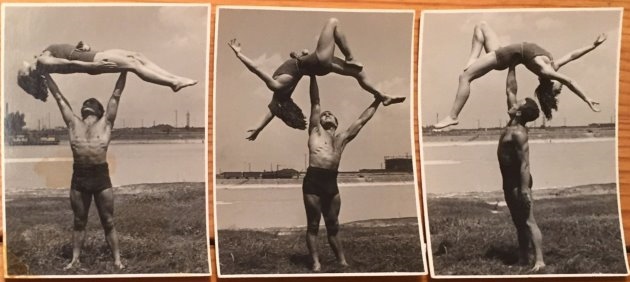click to dowload our latest edition
CLICK HERE TO SUBSCRIBE TO OUR NEWSLETTER


Published
5 years agoon
By
adminMOIRA SCHNEIDER
While it is now universally accepted, little was known about its creator until recently.
An exhibition at the South African Jewish Museum in Cape Town – Imi Lichtenfeld, Krav Maga and its Creator – shines a spotlight on an individual whose martial art formed the basis for Jewish armed forces before and after the creation of the state of Israel.
Born in Budapest in 1910, Imrich “Imi” Lichtenfeld spent his childhood and youth in Bratislava, a vibrant Jewish centre in the then-Czechoslovakian Republic. From the mid-1930s with the rise of Nazism, Jews began to be subjected to violence, including shop windows being smashed and Torah scrolls being thrown from synagogues and burnt.
Lichtenfeld and others from his Makabea sports club, and the Jewish organisation Betar reacted by forming a Jewish defence group to face down anti-Semitic gangs in his hometown.
In addition to the athletic use of wrestling and boxing techniques, he gained experience in street fighting that he later used to create his self-defence system. He believed that traditional martial arts had limited efficacy in real-world situations.
Lichtenfeld left present-day Slovakia for Palestine in 1940, and after serving under British forces in North Africa and the Middle East, was granted entry to British-administered Mandatory Palestine in 1942.
Once there, he became involved with the Haganah armed Jewish resistance, which later became the foundation for the Israeli armed forces. In 1944, he began training members of the Haganah, Palmach and Palyam – illegal paramilitary organisations – in his areas of expertise: swimming, wrestling, and self-defence.
After the state of Israel was created in 1948, Lichtenfeld became head physical training instructor of the armed forces, preparing them for battle. He served in the army for about 20 years, during which he developed and perfected his unique system of self-defence and hand-to-hand combat, according to an exhibition panel.
This became known as Krav Maga, which translates as “contact combat”.
After leaving the army, Lichtenfeld began adapting his system for civilian use, opening schools in Tel Aviv and Netanya. In 1972, he started a course for instructors at the Wingate Institute, which resulted in Krav Maga spreading in Israel and abroad.
It is now part of the training programme for special units and police forces in many countries.
The exhibition in Cape Town, provided by the Slovakian Museum of Jewish Culture in Bratislava, runs until the end of August.
Lichtenfeld was “virtually unknown” in his native Bratislava, museum director Gavin Morris told the gathering at the exhibition opening. This changed when two of his former students visited Slovakia in 2017 with the intention of creating a memorial plaque to commemorate him.
“They enlisted the help of the Museum of Jewish Culture and slowly, through this process, an awareness of his legacy grew and culminated in the exhibition that you see here today.
Lichtenfeld had the awareness and foresight to recognise the need for the Jewish people to take responsibility for their own safety and security,” Morris said.
“He acted on this awareness, not only in making aliyah, but by applying what skills and experience he had to this issue, making it his life’s work. His training of the Palmach, and later the soldiers of the Israeli Defense Forces, undoubtedly helped save many Jewish lives.”
Lichtenfeld’s dedication to the further development of Krav Maga resulted in it becoming a leading form of self-defence training worldwide, including a number of Krav Maga schools in Cape Town.
“Following Lichtenfeld’s example, Jewish communities now take responsibility for their own safety. We owe those volunteers who give of their time to safeguard us, their fellow community members, our deepest gratitude,” he said.
We learn from one of Lichtenfeld’s students and a friend, Yaron Lichtenstein, that “Imi based the self-defence part of Krav Maga on observation and an understanding of what was missing from traditional martial arts. In the process, he developed techniques and exercises for any possible situation of danger in the street,” according to the exhibition.
“He also created movements and special techniques that give Krav Maga practitioners unprecedented control of their mind and body.”
Opening the exhibition, Loren Raize, the director of Community Security Organisation Cape Town, said she was drawn into Imi’s story. “How bold he must have been, forming a Jewish defence group and then brawling on the streets of Bratislava, Slovakia, to defend this cause,” she said.
“I think of how he brought Krav Maga into the lives of ordinary people like you and me, so that they might defend themselves and ensure the horrors of our past shall never happen again. Today we are still forced to recognise the need for Jews to be able to protect themselves,” she said.
“The world may look different, but sadly, the threats remain unchanged,” she said, describing Lichtenfeld as a pioneer who had found a way of counteracting his own community’s persecution.
